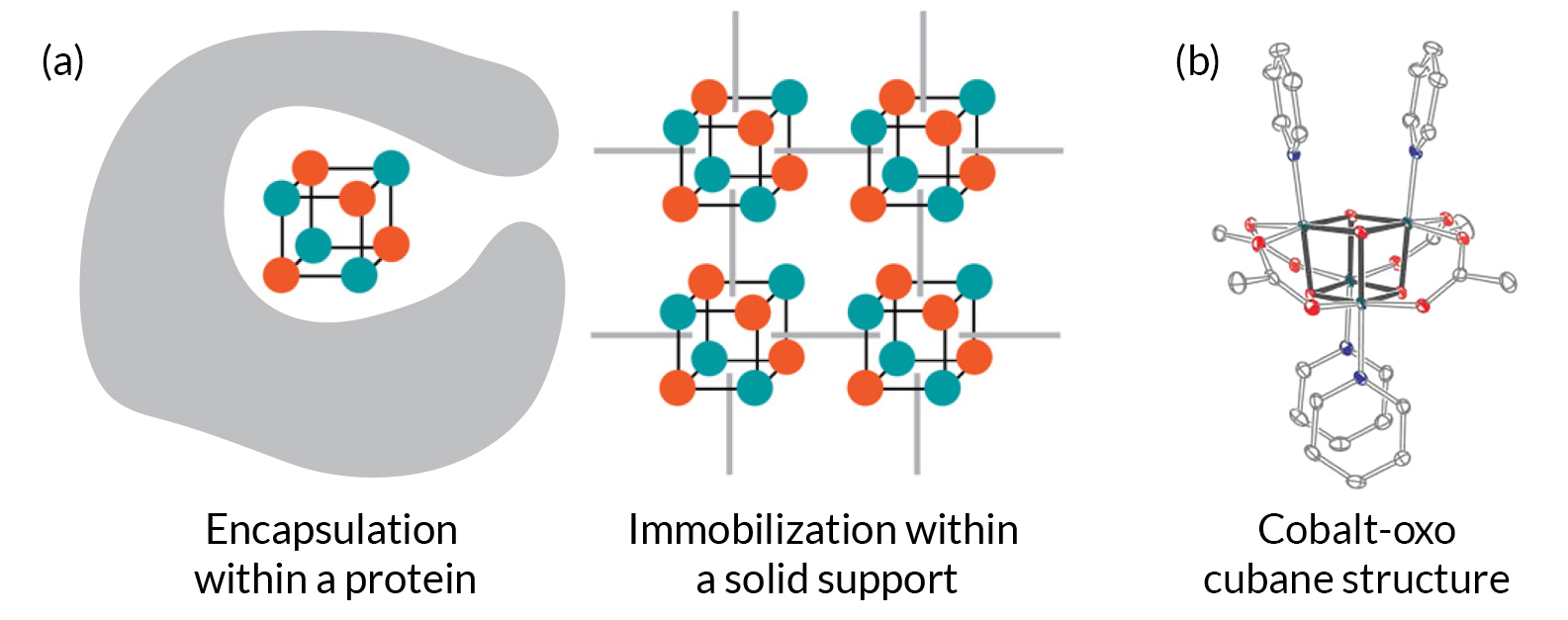Scientists have long sought to mimic, through artificial photosynthesis devices, the process by which plants make their own fuel using sunlight, carbon dioxide, and water. Metal–oxide catalysts inspired by natural photosynthetic enzymes can provide important guidance for catalyst design, but exactly how they work to generate renewable fuel remains a mystery.
Now, a study led by Berkeley Lab—and supported by x-ray spectroscopy at the Advanced Light Source (ALS), materials characterization at the Joint Center for Artificial Photosynthesis, and calculations performed at the National Energy Research Scientific Computing Center—has uncovered new insight into how to better control cobalt oxide, one of the most promising catalysts for artificial photosynthesis.
In this work, cobalt-oxo cubane (Co4O4) serves as a model for cobalt oxide. When in solution, the Co4O4 catalytic units eventually collide into one another, reacting and thus deactivating. To hold the catalysts in place and prevent these collisions, the researchers synthesized several metal–organic frameworks (MOFs) that hold Co4O4 within a scaffold. The approach is similar to how tetramanganese, a metal–oxygen catalyst in natural photosynthesis, protects itself from self-destruction by hiding in a protein pocket.
At ALS Beamline 10.3.2, x-ray absorption spectroscopy (XAS) demonstrated that the local environments and chemical states of the MOFs’ cubane centers were preserved during framework formation and after exposure to highly alkaline water. Ultimately, by using the MOFs, the researchers were able to identify a key hydroxide complex central to photosynthesis-boosting reactions. Overall, the study provides a clear, conceptual blueprint for engineering the next generation of energy-converting catalysts.

A.I. Nguyen, K.M. Van Allsburg, M.W. Terban, M. Bajdich, J. Oktawiec, J. Amtawong, M.S. Ziegler, J.P. Dombrowski, K. . Lakshmi, W.S. Drisdell, J. Yano, S.J.L. Billinge, and T.D. Tilley, “Stabilization of reactive Co4O4 cubane oxygen-evolution catalysts within porous frameworks,” PNAS 116, 11630 (2019), doi:10.1073/pnas.1815013116.
Adapted from the Berkeley Lab Science Snapshot, “Here Comes the Sun: A New Framework for Artificial Photosynthesis.”